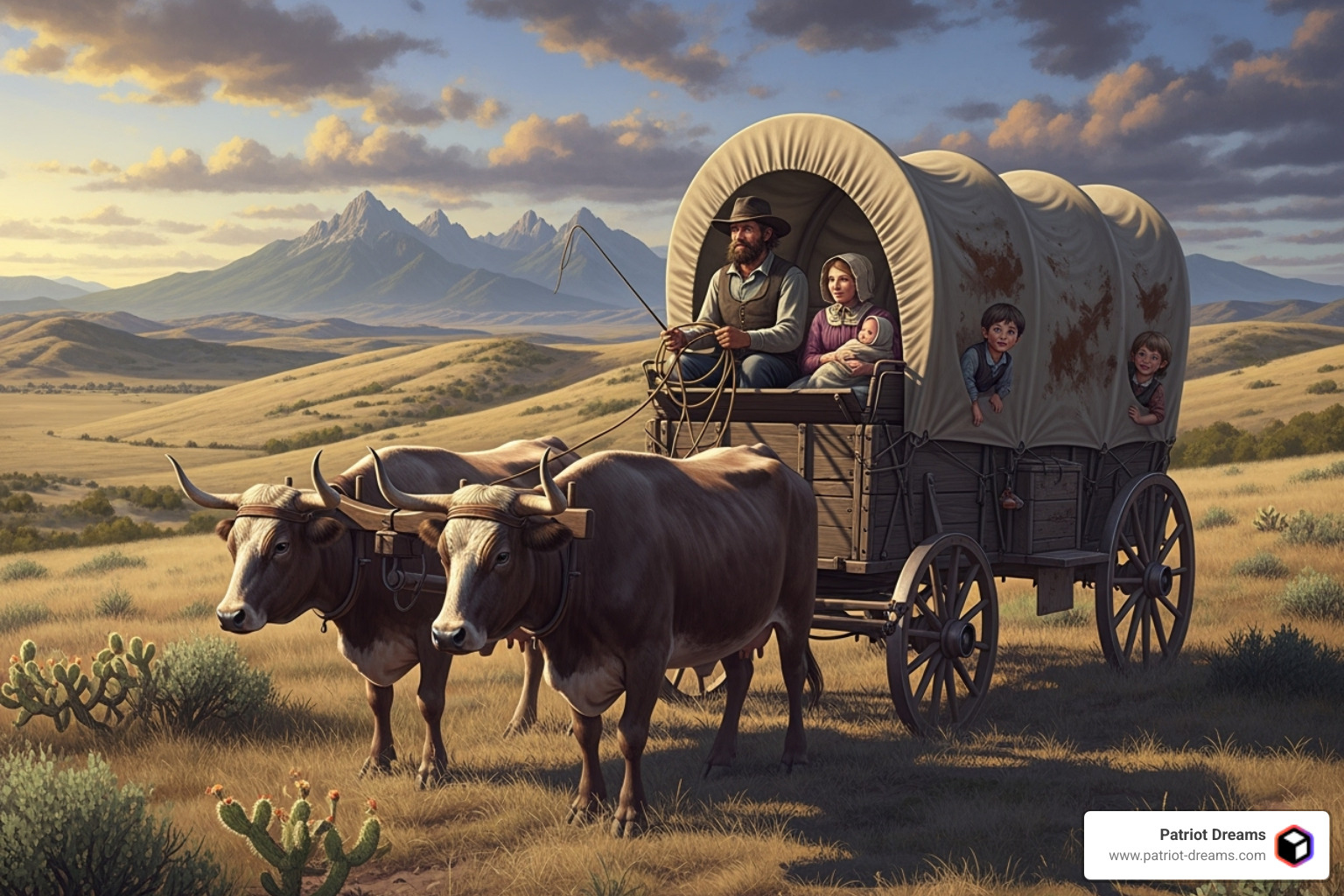The Spirit of Progress: A Journey Through American History's Milestones
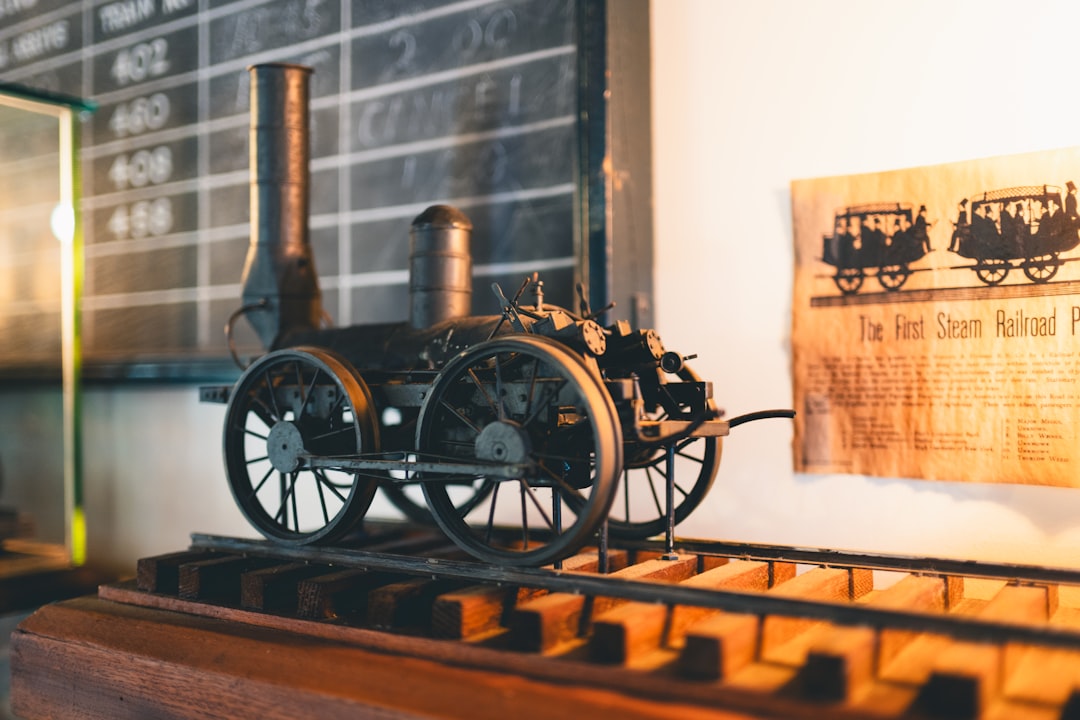

The Unstoppable Drive of American Ingenuity
American innovation history spans over two centuries of groundbreaking inventions that transformed not just the United States, but the entire world. From Benjamin Franklin's lightning rod in the 1750s to today's artificial intelligence breakthroughs, American inventors have consistently pushed the boundaries of what's possible.
Key periods of American innovation:
- Colonial Era (1700s-1800s): Steam engines, cotton gin, telegraph
- Industrial Revolution (1860s-1940s): Light bulb, telephone, assembly line, airplane
- Space Age (1940s-1990s): Transistor, integrated circuit, internet protocols
- Digital Era (1990s-present): Personal computers, smartphones, social media, biotechnology
The United States has been the birthplace of 161 of Encyclopedia Britannica's 321 Greatest Inventions, which is a remarkable achievement that reflects the nation's unique culture of experimentation and entrepreneurship.
This extraordinary track record didn't happen by accident. America's founding fathers built innovation into the Constitution itself, with Article I, Section 8 empowering Congress to "promote the Progress of Science and useful Arts." Combined with abundant natural resources, a spirit of individual freedom, and waves of ambitious immigrants, this created the perfect storm for technological advancement.
As one observer noted in the 1840s, America had become a nation where "superbly splendid long cars" (trains) could carry passengers at unprecedented speeds of 30-40 miles per hour—a pace of change that would only accelerate through the centuries.
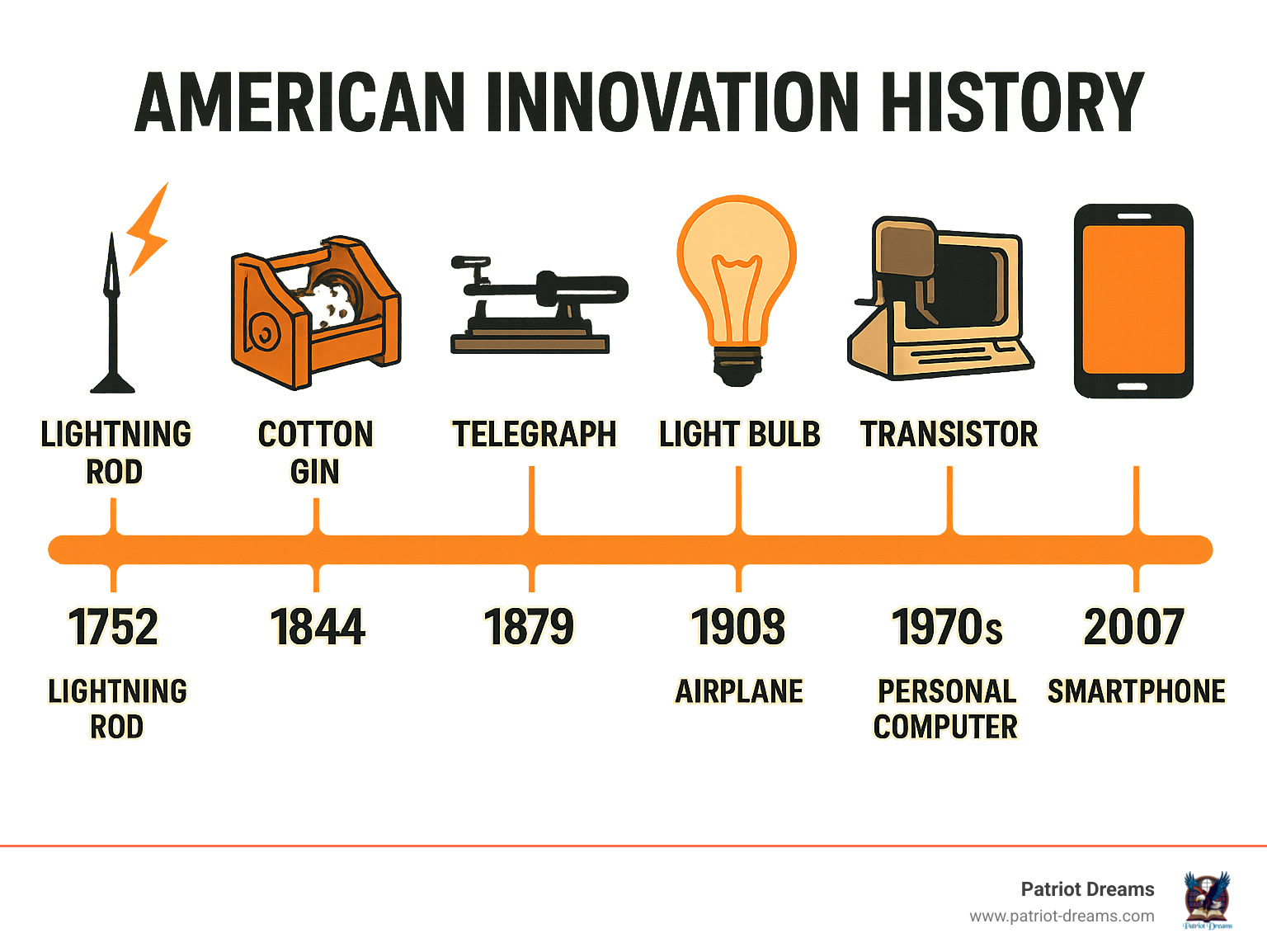
The Foundation of a Nation of Inventors (1700s – 1860s)
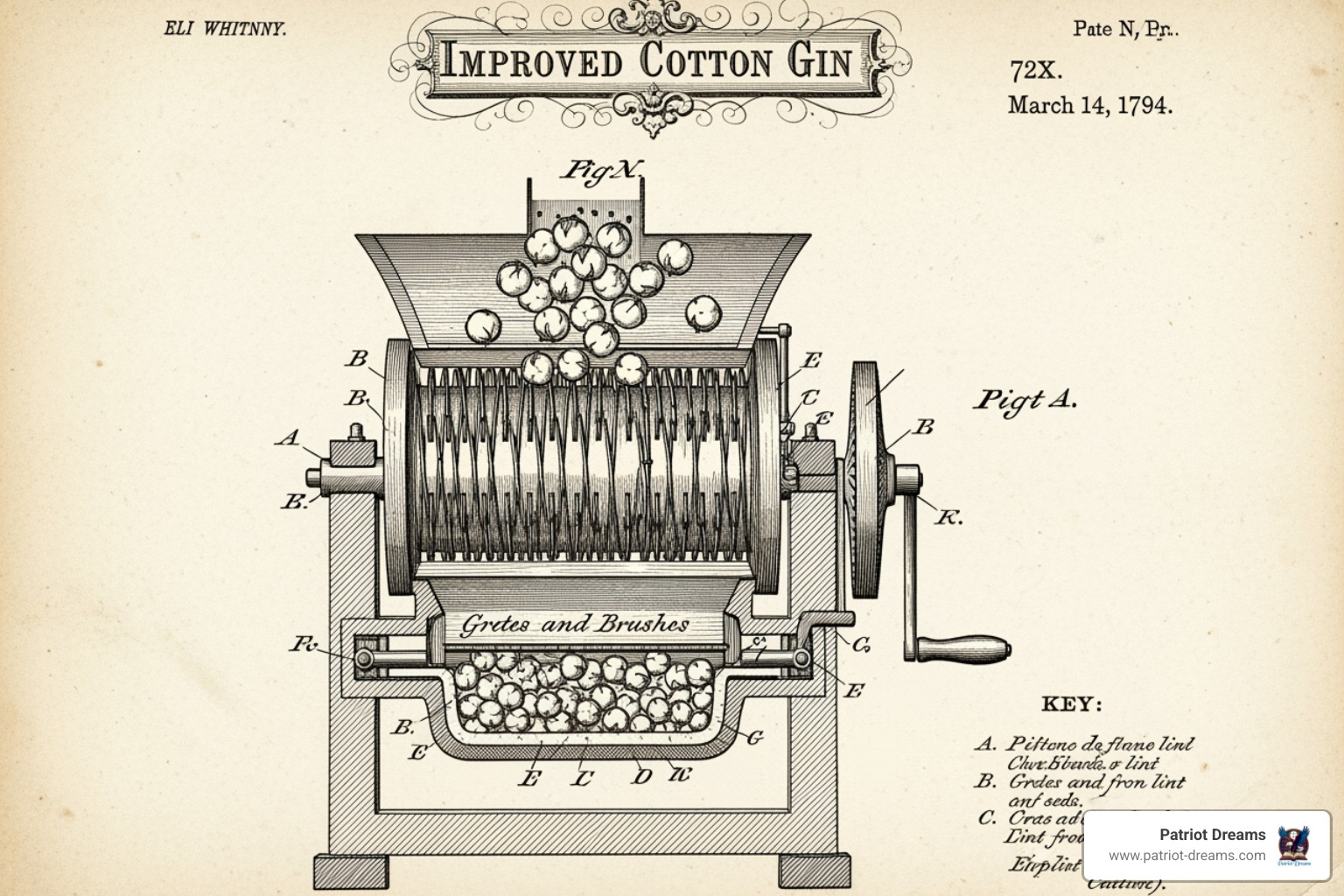
The roots of American innovation history run deep. Colonial America's vast wilderness and scattered settlements bred a special kind of person—the American tinkerer. These were farmers, blacksmiths, and merchants who, out of necessity, became inventors, seeing a problem and working until they found a solution.
A Constitutional Spark: The U.S. Patent System
America's founders embedded innovation in the Constitution. Article I, Section 8 established the U.S. Patent System, promising inventors exclusive rights to their creations—a idea for its time. After some early growing pains, including a devastating fire in 1836 that destroyed most records, the 1836 Patent Act rebuilt the system. It introduced professional patent examiners and the numbered system still used today, giving inventors the confidence they needed to create and invest.
The First Industrial Revolution and Westward Expansion
The early 1800s saw American innovation history solve uniquely American challenges, changing the nation into an industrial powerhouse.
Eli Whitney's cotton gin, patented in 1793, could clean cotton fifty times faster than by hand. While this innovation tragically deepened America's dependence on enslaved labor, Whitney also pioneered interchangeable parts in manufacturing, a system that would revolutionize countless industries.
Transportation was another major hurdle. Robert Fulton's steamboat (1807) turned rivers into two-way highways, a change so significant it led to the landmark Supreme Court case Gibbons v. Ogden. On the frontier, Cyrus McCormick's mechanical reaper (1834) solved harvest bottlenecks, freeing up labor for growing factories.
Perhaps nothing captured the era's spirit like Samuel Morse's telegraph. His 1844 message, "What hath God wrought?" annihilated distance for communication. By 1866, a vast network of wires formed a nervous system for the growing nation.
The railroad boom tied it all together, with track mileage exploding from 3,326 in 1840 to 30,600 by 1860. Lines like the Baltimore and Ohio Railroad, detailed in The Great Road: The Building of the Baltimore and Ohio, the Nation's First Railroad, 1828–1853, didn't just move goods—they moved dreams and communities westward. Each innovation solved a real problem, fueling a spirit of practical problem-solving that defined the era.
Forging a Modern Nation: The Gilded Age of Invention (1860s – 1940s)
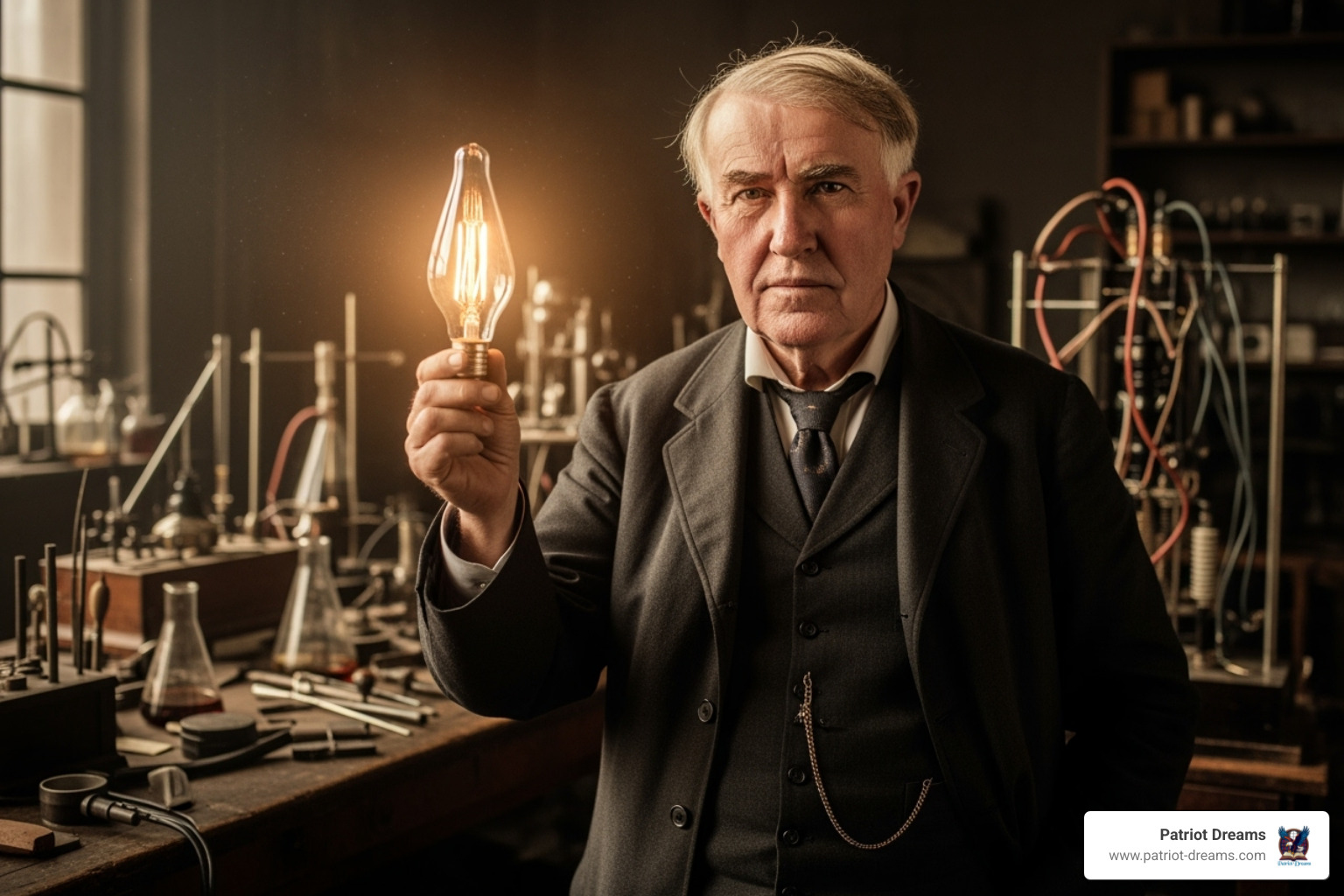
The decades between the Civil War and World War II were an explosive chapter in American innovation history, changing the U.S. into the world's industrial giant. By 1913, America produced over a third of all manufactured goods. This era was remarkable for how inventions like steel, railroads, and electricity worked together, weaving the country into a modern nation, as reflected in metrics like the Industrial Production Index.
Weaving the Nation Together: Steel, Railroads, and Communication
The secret ingredient was cheap, high-quality steel from the Bessemer process. Andrew Carnegie seized this opportunity, building an empire that supplied steel for skyscrapers and, most importantly, the railroads that bound the continent.
By 1920, 254,000 miles of track crisscrossed America, creating a unified national market. The impact was so profound that railroads forced the creation of standardized time zones to manage schedules. Communication kept pace. In 1876, Alexander Graham Bell's telephone launched a revolution in human connection. By 1920, 13 million telephones were connecting voices across vast distances.
The Age of Electricity and Mass Production
If steel and railroads were the body's muscles, electricity was its nervous system. Thomas Edison's practical incandescent light bulb (1879) extended the day, changing city life and industry. However, he faced a challenge from Nikola Tesla, whose alternating current (AC) system could transmit power over longer distances. The War of the Currents ended with Tesla's AC system, backed by George Westinghouse, winning out and enabling the widespread electrification of a vast nation.
Meanwhile, Henry Ford perfected the assembly line for his Model T automobile. The results were revolutionary:
| Feature | Pre-Assembly Line (1908-1912) | Assembly Line (1913 onwards) |
|---|---|---|
| Assembly Time | 12.5 hours | 1 hour 33 minutes |
| Cost of Model T | ~$900 | ~$360 (by 1916) |
| Production Volume | Limited | Mass production |
| Accessibility | For the wealthy | Affordable for the middle class |
Ford's system didn't just make cars faster; it made them affordable for regular American families, changing the automobile from a luxury into a necessity. These Gilded Age innovations were the building blocks of modern America.
The Unparalleled American Innovation History of the 20th Century
The 20th century saw a shift in American innovation history. The lone inventor gave way to massive, collaborative teams of scientists and engineers tackling projects that would reshape the world. This new approach was born from national challenges like world wars and the race to the moon.
From Global Conflicts to the Space Race
World War II created the military-industrial-academic complex, a partnership where government funded ambitious research at universities and in industry. The Manhattan Project, which developed the atomic bomb, was the ultimate example of this new model, proving America could tackle seemingly impossible challenges.
After the war, agencies like DARPA and NASA continued funding groundbreaking research. The Space Race, sparked by the Soviet launch of Sputnik, pushed innovation to new heights. NASA's Apollo program, culminating in the 1969 moon landing, was the pinnacle of this coordinated effort. The benefits extended beyond space; GPS technology, a military project developed between 1973 and 1993, now guides daily life, while medical breakthroughs like penicillin saved countless lives.
The Digital Revolution: A Modern Chapter in American Innovation History
A quieter revolution began at Bell Labs in 1947 with the invention of the transistor. This tiny device replaced bulky vacuum tubes, making modern electronics possible. It led directly to the integrated circuit in the late 1950s, which packed millions of transistors onto tiny silicon chips, sparking an explosion in computing power.
Silicon Valley became the epicenter of this digital revolution. The personal computer emerged in the 1970s, with visionaries like Steve Jobs at Apple and Bill Gates at Microsoft bringing these powerful tools into homes and offices.
This period marked a return to America's roots, as The U.S. Started as a Nation of Tinkerers explains. It combined large-scale institutional research with the scrappy entrepreneurship of startups, proving the American spirit of innovation could flourish in garages as well as in massive government projects.
The Information Age and Beyond: Redefining the Future
The late 20th and early 21st centuries brought the most dramatic change in communication since the printing press. American innovation history entered its most connected chapter, fundamentally changing how humans interact, learn, and live.
Connecting the Globe in the Digital Era
The story began in the 1960s with a DARPA project to create a resilient military computer network. Its protocols, TCP/IP, became the backbone of the Internet. By the 1990s, the World Wide Web made this network accessible to everyone, and email and online shopping began to reshape industries.
The real game-changer was the 2007 iPhone. Apple's device put a powerful computer in everyone's pocket, fueling the rise of social media platforms like Facebook and Twitter. These platforms, along with the boom in e-commerce, transformed everything from news and marketing to shopping, creating a truly global marketplace.
The Next Frontier: Lessons from American Innovation History
Today's American innovation history continues to unfold. Scientists are developing CRISPR gene-editing technology, which could cure genetic diseases. Artificial intelligence is moving from labs into everyday life, offering incredible possibilities in medicine, safety, and education. And clean energy innovations are tackling climate change while creating new industries.
This journey isn't without challenges, from privacy concerns to questions about AI's impact on employment. But the lessons from America's innovation story remain relevant. The key ingredients—strong patent protection, investment in research, a culture that celebrates risk-taking, and the freedom to pursue big ideas—are the same ones that have driven progress from the beginning. The next breakthrough is being worked on right now, continuing the legacy of American ingenuity.
Frequently Asked Questions about American Innovation
Here are answers to some common questions about American innovation history.
What is considered the most impactful American invention?
While it's hard to pick just one, several innovations stand out as platforms for other breakthroughs. The electrical grid, a system built on the work of figures like Thomas Edison and Nikola Tesla, transformed daily life and work. The transistor, invented at Bell Labs in 1947, is the foundation of all modern electronics, from smartphones to medical devices. And the internet, which grew from a Defense Department project, has revolutionized global communication, commerce, and access to information.
How did the US government foster innovation throughout history?
The U.S. government has been a key partner in innovation since the nation's founding. The Constitution's patent system (Article I, Section 8) gave inventors legal protection for their ideas. The Morrill Acts of 1862 and 1890 created land-grant universities that became research powerhouses. In the 20th century, direct funding through agencies like the National Institutes of Health (NIH), DARPA, and NASA spurred countless breakthroughs in medicine, technology, and space exploration.
Who are some of the most famous American inventors?
American innovation history is filled with famous inventors. Early pioneers include Benjamin Franklin (lightning rod, bifocals), Eli Whitney (cotton gin, interchangeable parts), and Samuel Morse (telegraph). The industrial age brought us Thomas Edison (light bulb, phonograph), Alexander Graham Bell (telephone), and the Wright Brothers (airplane). Henry Ford revolutionized manufacturing with the assembly line. The 20th century saw innovators like Nikola Tesla (AC electricity), Steve Jobs (personal computer, iPhone), and Jennifer Doudna (co-developer of CRISPR gene-editing).
Conclusion: The Enduring Spirit of Progress
Our journey through American innovation history reveals a consistent spirit of ingenuity spanning more than two centuries, from colonial tinkerers to today's Silicon Valley entrepreneurs. The common thread is a core American belief that problems exist to be solved.
This spirit was nurtured by the Constitution's patent system, a culture of entrepreneurship, and a view that risk-taking is part of success. The model of innovation has evolved from lone inventors to massive R&D projects and now to a vibrant blend of both, combining systematic investment with scrappy entrepreneurship.
The lessons from our past are clear: innovation flourishes when we protect intellectual property, invest in education and research, and maintain a culture that welcomes bold ideas. This spirit is essential as we face new global challenges.
These stories of American ingenuity aren't just history—they're inspiration for what's possible when creativity meets determination. We invite you to explore these stories further with Patriot Dreams, where we bring American history, heritage, and personal stories to life through interactive experiences.
Find stories of American ingenuity on the Patriot Dreams app
Join the Patriot Dreams Community
Download the app today and start your journey through American history and personal legacy.

Explore Our Latest Insights
Dive into stories that shape our American legacy.




